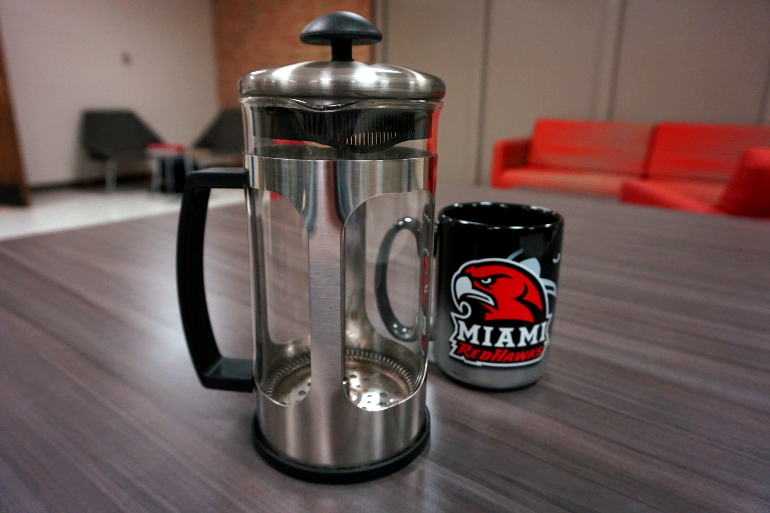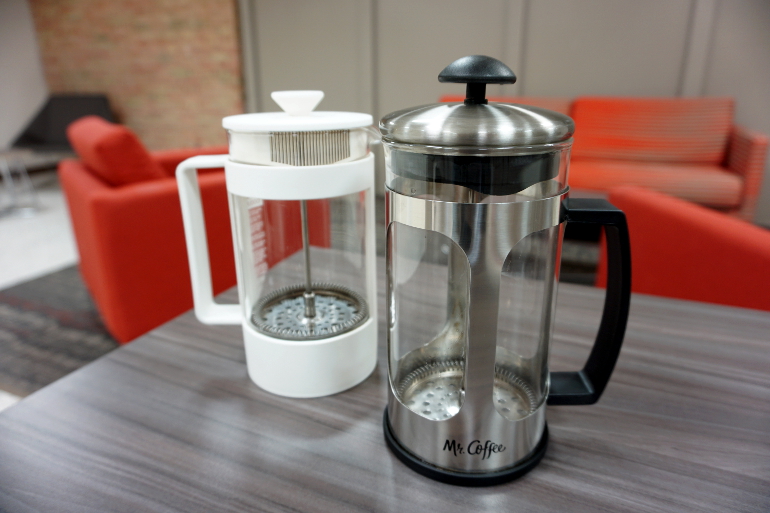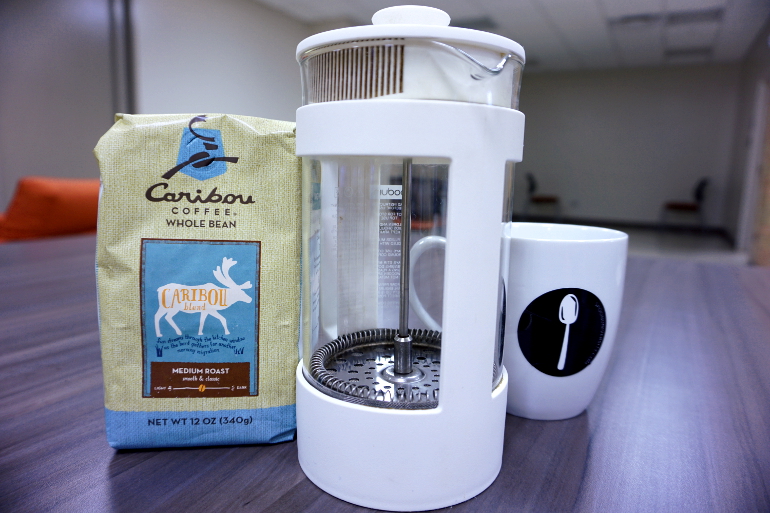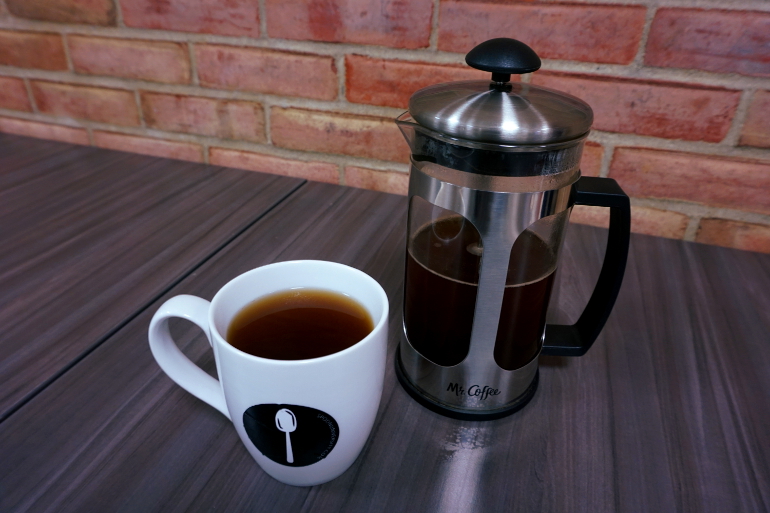You know what really burns my proverbial beans? Keurig coffee machines. Maybe you’ve heard how we use enough non-recyclable coffee canisters to encircle the globe 10.5 times? Or perhaps you’ve pondered the math and learned that Keurig coffee costs 5 times as much per cup?
In addition to spawning 13 billion additions to our landfills, numerous hashtags, and a Cloverfield-esque spoof called Kill the K-Cup, practically every publication on the internet has penned an article protesting coffee pods: but you know what they all forgot to add? A solution.
All these coffee conspiracy criers lack a countermeasure to the contentious convenience of the K-cup (whew). The answer, however, has been hiding in cafes, cupboards, and Portlandia episodes the entire time: the French press.

Photo by Ryan Terhune
Yeah, that weird looking thing. This steampunk masterpiece of coffee plunging potential is the answer to all your caffeine needs: it also brews tea, it was invented by Italians in 1929 (porca vacca!), it’s dirt cheap, it’s hipster-approved, and it’s the perfect addition to any dorm room or apartment kitchenette.
But before I get ahead of myself, here’s the pitch: French presses put Keurigs to shame in terms of convenience, sustainability, and flavor. Here’s how:
Convenience

Photo by Ryan Terhune
College cuisine is defined by convenience (ramen, meal plans, 2 am delivery, etc.), and the same is true for the French press. It may look like the bizarre love child of a vacuum tube and an alien toilet plunger, but you can produce an entire pot of coffee in less than five minutes, with 4 easy steps and with minimal brain power. It’s easier than Easy Mac.
Despite the fact that it’s a culinary slam dunk, French pressing also looks totally fly and should be in every foodie’s repertoire of impressive kitchen tricks. Did I mention there’s no gritty used filters to fling into your trash? French presses are self-contained and clean up is as simple as rinsing it out. Seriously, instead of a pile of nasty stinky coffee grinds, you just toss the French press in the sink and you’re free to seize the day.
Additionally, these babies produce 2-3 cups of coffee per batch, so instead of firing up the Keurig every time you want a warm up, there’s plenty of coffee to go around. Perfect for finals season when you and your study squad are averaging 6+ cups of mental antifreeze a day.
Sustainability

Photo by Ryan Terhune
Did you know that Keurig’s inventor, John Sylvan, has publicly denounced the environmental impact of his device and since being bought out of the Keurig company, he’s actually reinvested in renewable energy? John feels awful about the impact of coffee pods, and so should you.
French presses, as I mentioned earlier, are virtually waste-free and utilize a reusable metal strainer instead of endless piles of filter paper. Keurig pods, by comparison, are made from an ultra-dense, especially un-recyclable plastic John Sylvan likens to a “nuclear bunker.”
This doesn’t mean your French press is delicate by comparison: the simplicity of their design means it’ll keep seeping and steaming long after your Keurig machine quits (or worse) from any number of inevitable mechanical issues.
Finally, the French press method of seeping coffee is more efficient than K-Cup’s abbreviated extraction process, which results in less coffee being wasted. This is environmentally relevant because coffee beans are an incredibly water-intensive crop, so efficiently brewing coffee helps reduce your impact on the global water crisis (not to mention all the water used to produce the plastic in pods).
Flavor

Photo by Ryan Terhune
For a brand that translates from Dutch to “excellence,” Keurig coffee rarely lives up to its superlative namesake. A good cup of coffee may be a matter of personal preference, but Keurig’s uncontested convenience spells big consequences when it comes to flavor.
Remember the nitrogen vacuum sealed, expedited brewing procedure I mentioned before? It’s the coffee equivalent of giving your tea bag a single dip and considering it brewed. For starters, Keurigs only heat to 192°F while the recommended minimum for brewing is 197°F, and each serving size is brewed with the same 10 grams of pre-ground coffee, so your 10-oz cuppa will be even more watered down than your 6-oz.
Tragic right? And to think you’re paying quintuple the price for this brown crayon water.
You know what’s way better than that bacteria-ridden cup of well-marketed but bad tasting instant coffee? You guessed it: French presses. Not only do French presses properly brew full body, low acidity, bonafide badass coffee, but seeping also maximizes coffee’s healthiest elements by retaining the beans’ natural oils, antioxidants, and nutrients.
Plus, all that extra coffee from brewing pots over pods offers infinite culinary possibilities, from coffee ice cubes to chocolate mocha pancakes, whoopie pies, and countless other coffee concoctions.
Kick the Keurig
French presses are low-key amazing and Keurigs are as odious as they’ve always been. If only the world regarded Keurigs with the same reluctance as plastic water bottles — why do Keurigs get overlooked while they’re equally overpriced, disastrous for the environment, and bad for your health? The answer is easy: kick the Keurig and buy yourself a shiny new French press.




